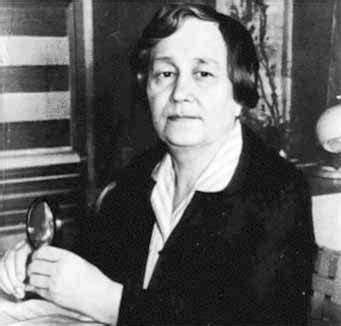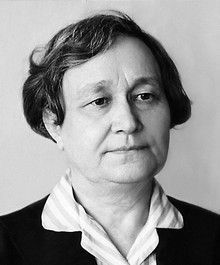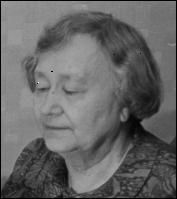In Defense of the Soil: One Century with Hydrodynamic Mathematician Pelageya Polubarinova-Kochina
- Dale DeBakcsy
- Apr 25, 2023
- 7 min read
Water is that great, terrible thing. Its chemical properties make it a magnificent solvent and coolant, which is wonderful if you’re trying to build a multicellular organism, but mathematically its behaviour was for centuries the stuff of scientists’ most frenzied nightmares. Unlike solids, which more or less sit there, and gases, which have molecules so far apart that we can usually make a set of ideal assumptions that allow us to make good approximations as to their behaviour, liquids live in this nebulous middle world of mathematical complexity, and water, with its powerful intermolecular forces, is a particularly nasty customer. For ages, we didn’t need to know all that much about water’s more complicated aspects, so we didn’t much bother plumbing those depths, but with the coming of the modern age and its craze for large-scale building, suddenly the need to deeply understand the motion of water through soil, and what it does to that soil’s long-term stability, became a pressing concern.
Some motions towards modelling the behaviour of water mathematically were begun in the mid- to late nineteenth century by the likes of Darcy, Dupuit, Forchheimer, Lembke and Zjoukovsky, but it was the early twentieth century that saw the subject burst into its full rigorous maturity under the watch of two brilliant Russian mathematicians, a married couple devoted to the Soviet ideal that academic knowledge was at its most valuable when applied to problems that improved the lives of everybody: N.E. Kochin and Pelageya Polubarinova-Kochina (1899–1999).
Pelageya Yakovlevna Polubarinova was born when the Russian tsar still sat confidently on his throne, completely unaware that in two decades he would be removed from power and murdered by his own people, and she died eight years after the fall of that Soviet Union which did the murdering. In between, she was one of her country’s most honoured mathematical minds, who made fundamental discoveries into the application of differential equations to modelling the behaviour of groundwater movement, and who at the age of 60 uprooted her life to bring that knowledge to a harsh and unforgiving new climate to the benefit of those living there.
Everything about the setting of Polubarinova’s story is on the grandest of scales – she worked on towering projects that reshaped the destinies of people against the backdrop of revolution, Stalinism and a nation’s lurching will to achieve the future. For all of the dramatic bigness surrounding her, however, we have all too little to say about the early years of Polubarinova herself. In 1974, an authorised memoir of her life was published, but as a party-sanctioned account of one of the country’s most valuable intellectual figures, its authenticity on many points has been called into question, and it is more often useful for what it doesn’t say than for what it does.

What we seem to know is that Polubarinova was born in 1899 in Astrakhan, one of Yakov Polubarinov and Anisiya Panteleimonovna’s four children. Sometime in her youth, the family moved to St Petersburg, where she enjoyed the more rigorous mathematical options on offer in what was then Russia’s capital city. In 1918, her father died, leaving her as the primary bread-winner for her mother and two of her siblings (one of her sisters died of tuberculosis during the Civil War that followed the Bolshevik Revolution). These were years of toil and hardship, as Polubarinova worked at the Main Physical Laboratory to earn money, while at the same time attending Petrograd University to further her studies, pushing through all of the responsibility and work even when she contracted tuberculosis herself.
Personally challenging, these were nevertheless years of intellectual excitement as Polubarinova benefited from the Soviet Union’s policy of allowing equal access to upper division science topics for everyone, regardless of gender. She was able to take classes in hydrodynamics, complex variables, differential equations and theoretical meteorology that would have been off limits to her just five years earlier. Graduating in 1921, she went on to work for Alexander Friedmann, known today for the Friedmann equations which predicted that the universe is expanding, but who was then mostly known as a theoretical meteorologist.
Working in the Division of Theoretical Meteorology, she performed computations and met mathematician Nikolai Evgrafovich Kochin, who would become her husband in 1925. Their marriage featured a telling simplicity – they attended a brief civil ceremony, took their guests out to tea, and then got back on with the work before them. Nikolai was devoted to the ideals of Communism, and had served in the Red Army during the Civil War, and like Pelageya he was devoted to the idea that those with mathematical talents should use those skills whenever possible for the greater good. As Nikolai rose through the ranks of the Soviet academic world, Pelageya devoted herself to teaching mathematics to the workers who now had access to the Russian educational system, serving as an instructor at the Institute of Transportation from 1925 to 1931, the Institute of Civil Aviation Engineering from 1931 to 1934, and as a professor at Leningrad University after 1934.

Pelageya found her work as a professor far less demanding than her duties as an instructor had been, and resolved to complete her PhD, which she began in 1934 and completed in 1940, becoming only the third Russian woman to receive the degree of Doctor of Physical and Mathematical Sciences. Her work was increasingly centred upon the problem of filtration, of creating a mathematical model for how water moved underground that could be used when planning large-scale construction or hydroelectric projects. Some progress had been made on this front before, but an equation that was able to represent, for any point in a given section of subsoil subject to certain initial conditions, what the potential for water movement might be, had eluded the world’s best minds.
Pelageya Polubarinova-Kochina attacked this problem using the full artillery of her mathematical upbringing, employing her knowledge of differential equations and complex variables to craft functions that modelled two-dimensional steady flow of underground water under increasingly complicated circumstances. Beginning with her classic ‘Application of the theory of linear differential equations to some problems of groundwater flow’ (1938), through ‘On unsteady groundwater flow in two layers of different density’ (1940), ‘On unsteady flows in the theory of seepage’ (1945), and ‘On unsteady groundwater flow in seepage from reservoirs’ (1949), and culminating in her landmark textbook Theory of Groundwater Movement (1952), Polubarinova-Kochina tackled and solved some of the greatest engineering problems involving the interface of soil and water, paving the way for her greatest adventure in 1959.
At 60 years old, Polubaroniva-Kochina was one of those rarest of creatures: a scientist who had risen to prominence during the Stalin era and maintained her position not only throughout but beyond. The value of her work was so beyond dispute, her commitment to the cause of science grounded by human need so apparent, that the academic purges which withered so many other intellectuals during Stalin’s regime did not touch her. (Or, at least, they don’t seem to have – her memoirs are conspicuously silent on the subject of Stalin.) By 1958, Stalin had been dead for five years and Soviet science had largely picked up the pieces of the destruction he had wrought and was marching forward to new projects. That year, Polubarinova-Kochina was invited to be one of a small group of scientists who would uproot their lives and move to Siberia to attempt to bring hydroelectricity and other infrastructure into that desolate and forbidding corner of the world.
At that point in life, Polubarinova-Kochina had nothing to prove. She was recognised the world over as an expert in her field of applied mathematics. She had a good and respectable position in Moscow, where she lived close to her children and their children (her husband had died in 1944). And yet, at the age of 60, she gave all of that up to live for more than a decade at the bleak edge of Soviet civilisation, heading the department of applied hydrodynamics at Novosibirsk from 1959 to 1970, applying new mathematical tricks to the problems presented by irrigating and electrifying new and barren lands.
Returning home at last at the age of 71 she continued her mathematical research while the Soviet Union lavished titles and celebrations upon her. She had already been made an Academician of the Academy of Sciences in 1958 and received four Orders of Lenin. On the occasion of her seventieth birthday, she was made a Hero of Socialist Labor, and on that of her eightieth, she was given the Order of Friendship of Peoples, while new appreciations of her life and work were published on her seventieth, seventy-fifth, and eightieth birthdays. Her last paper, ‘Some properties of a linear-fractional transformation’, was published in 1999, shortly before her death at the age of 100.

There are parts of Pelageya Yakovlevna Polubarinova-Kochina’s life we shall probably never know, tales of anxiety in the darkest of times, and struggles on civilisation’s thin edge, but what we have, what we will always have, is her eight decades of steady and dedicated work to apply her age’s best mathematical insights and techniques to the solving of its most intractable engineering problems. There are those who have power, and water, and a place to live, thanks to her seemingly prosaic work unravelling the complex interface between land and liquid. She lived in that brisk moment when practice, society and intellectual effort all marched with the same gait, and provided one of its most stirring examples of mind and conscience, pure raw brainpower and idealistic commitment, harnessed together in the name of public work and the general good.
FURTHER READING: Polubarinova-Kochina’s Theory of Groundwater Movement was translated by J.M. Roger de Weist in 1962 and features a couple of introductory pages by the translator exploring her place in the history of hydrodynamics, and two of the chapters prominently feature the results of her own research (Chapters 7 and 14), but unless you are really up on your differential equations it is probably going to be rough going.
If you'd like to read more about women mathematicians like this one, check out my History of Women in Mathematics, launching in October 2023 from Pen and Sword Books!




Comments